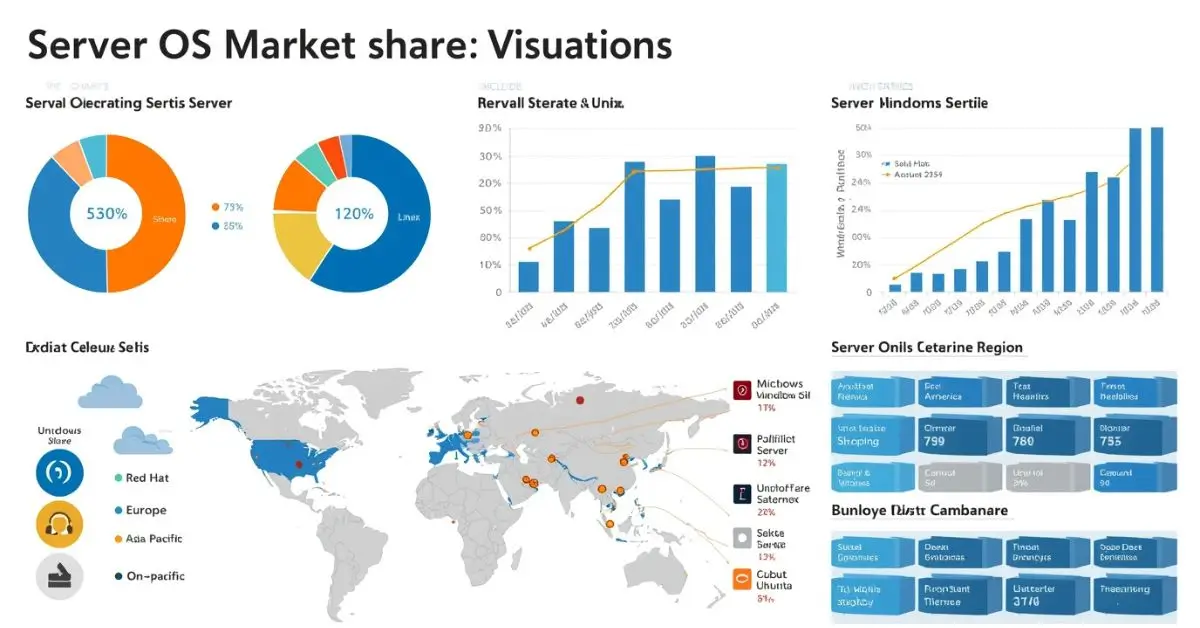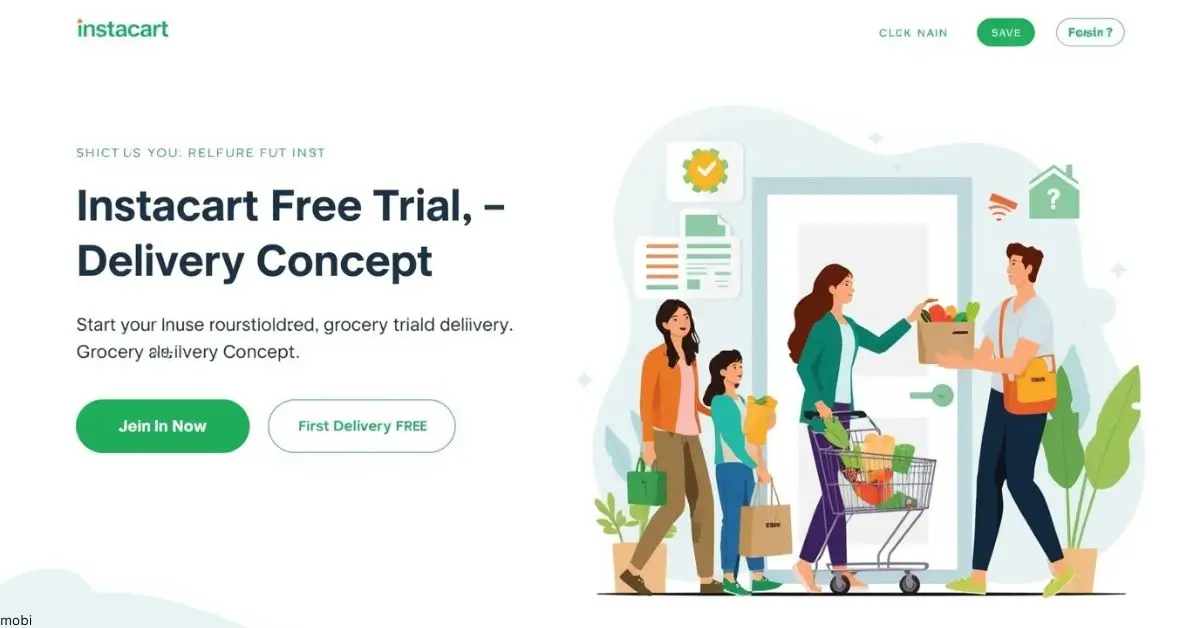BUSINESS
Beyond the Poké Ball: Inside Pokémon Center Japan

Inside Pokémon Center Japanis like walking straight into the animated world that has captivated generations. These official stores are more than just places to shop; they are immersive experiences that blend nostalgia, fandom, and Japanese pop culture into a single destination. From exclusive merchandise and themed interiors to interactive zones and themed cafés, Pokémon Centers across Japan offer something truly special for both casual visitors and dedicated collectors.
The Origins and Purpose of Pokémon Centers
The concept of Pokémon Centers began in the late 1990s, originally as a way to provide fans with a centralized hub to buy official merchandise and promote the brand beyond video games and anime. Over the years, these centers evolved into experiential spaces, combining retail, gaming, and themed attractions. Each Pokémon Center reflects a careful blend of regional flair and franchise history, offering products and themes not found anywhere else.
In Japan, these stores have become a staple for tourists and locals alike. Whether it’s a massive flagship location like Pokémon Center MEGA TOKYO in Ikebukuro or a stylish boutique store like Pokémon Center Shibuya, each center offers a curated experience unique to its city. These stores help solidify Pokémon’s cultural relevance, offering fans a space to interact with the brand in more personal and tangible ways.

Exploring Japan’s Most Iconic Pokémon Centers
While each Pokémon Center in Japan offers its own charm, a few stand out due to their design, size, and exclusive content. The Pokémon Center Tokyo DX, located in Nihonbashi, combines a traditional Japanese aesthetic with futuristic digital displays, offering seasonal events and limited-edition plushies such as kimono-wearing Pikachu.
Another fan-favorite is Pokémon Center Shibuya, housed in the sleek Shibuya Parco shopping complex. This center has a high-tech “Pokémon Lab” design and often features collaboration items and fashion-forward goods. You can even interact with a life-sized Mewtwo encased in a lab-style capsule.
Meanwhile, Pokémon Center Osaka DX and Pokémon Center Kyoto both offer region-specific merchandise and reflect their cities’ unique cultural identities. Travelers passing through airports can visit compact Pokémon Stores, such as the one at Kansai International Airport or Narita Airport, which are perfect for last-minute gift grabs.
Merchandise and Collectibles: A Shopper’s Paradise
The heart of every Pokémon Center lies in its merchandise. Fans can find a vast array of goods, from exclusive plush toys and stationery sets to clothing, home décor, trading cards, and even luggage tags adorned with Pikachu, Eevee, and other beloved characters. Some items are available only in specific stores, making them highly sought after by collectors.
Each location typically offers a rotating line of themed merchandise based on seasonal events, regional traditions, or game anniversaries. For example, during Japanese festivals, you might find Pikachu in traditional yukata, or special plush toys inspired by Japanese folktales. These limited-edition releases often attract long lines and sell out quickly, underscoring the global demand for authentic Japan-exclusive Pokémon merchandise.
Many Pokémon Centers also include trading card game counters, where fans can buy booster packs, sleeves, and decks. Popular card releases—such as limited promo cards—are distributed through raffles, adding a gamified thrill to the shopping experience.
Pokémon Café: Dining with a Dash of Magic
For a more immersive experience, certain locations also feature the Pokémon Café, a themed dining space where food is artfully styled after characters and elements from the franchise. Located next to the Tokyo DX center, this café requires advance reservations due to its popularity. Guests can enjoy dishes like Poké Ball parfaits, Pikachu curry, and drinks themed after Legendary Pokémon.
Themed tableware, seasonal menus, and exclusive café-only souvenirs add to the overall charm. Even the ordering system is gamified, often involving interactive tablets and animations. The atmosphere makes the café a favorite among families, couples, and tourists looking to create a unique memory during their Japan visit.
A Haven for Gamers and Digital Fans
Beyond shopping and dining, Pokémon Centers also serve as gaming hubs. Visitors can test out the latest Nintendo Switch titles, participate in digital battles, or download special in-game content exclusive to the location. Special events sometimes allow players to receive Mystery Gift Pokémon, such as unique regional forms or shiny variants, adding another layer of excitement for video game fans.
Interactive screens, themed photo booths, and game demo stations make the centers an enjoyable experience even for those not planning to make a purchase. These features make the stores just as much about participation and exploration as they are about buying merchandise.

Tourist Tips: Making the Most of Your Visit
If you’re visiting from abroad, it’s worth knowing that many Pokémon Centers in Japan offer tax-free shopping for foreign tourists. Simply present your passport at checkout and ensure you meet the minimum purchase requirement (usually around ¥5,500). Stores are clearly marked with tax-free signs, and staff are generally well-trained to assist international visitors.
To avoid crowds, it’s best to visit on weekday mornings or early afternoons. Weekends and holidays can bring massive foot traffic, especially during new product launches. Check online in advance if you’re hoping to score specific items or event-exclusive merch, as stock can be limited.
Cultural Significance and Lasting Impact
More than just stores, Pokémon Centers reflect the emotional connection fans have with the franchise. From lifelong trainers to children discovering Pikachu for the first time, the centers cater to a multi-generational audience. They provide a physical space where the fantasy of the Pokémon world feels tangible, with everything from nostalgic displays to futuristic product demos.
For Japanese culture, these centers also symbolize how local entertainment IPs can reach global audiences while preserving their heritage. Pokémon’s ability to adapt and evolve through its retail presence has helped it remain a dominant force in both the domestic and international markets.
FAQs – Beyond the Poké Ball: Inside Pokémon Center Japan
Q1: How many Pokémon Centers are there in Japan?
There are over a dozen Pokémon Centers across Japan, including flagship locations in Tokyo, Osaka, Kyoto, Fukuoka, and Sapporo. Smaller Pokémon Stores can also be found in major airports and shopping malls.
Q2: What is the difference between Pokémon Center and Pokémon Store?
Pokémon Centers are larger flagship locations offering a wide variety of merchandise, interactive zones, and sometimes cafés. Pokémon Stores are smaller and typically found in travel hubs, carrying a more limited selection.
Q3: Do I need a reservation to visit the Pokémon Café?
Yes, the Pokémon Café—particularly the one in Tokyo DX—requires advance reservations, which can be made online. Spots tend to fill up quickly, especially during weekends or seasonal events.
Q4: Can I buy Pokémon Center Japan items online?
There is a Japanese online Pokémon Center store, but it doesn’t usually ship internationally. Many fans outside Japan use proxy shopping services to obtain exclusive merchandise.
Q5: Are Pokémon Centers in Japan tax-free for tourists?
Yes, most Pokémon Centers offer tax-free shopping for non-residents. You’ll need to show your passport and spend a minimum amount to qualify for the exemption.
Conclusion
Inside Pokémon Center Japan Visiting a Pokémon Center in Japan is far more than a shopping trip—it’s a cultural experience that blends fantasy, nostalgia, and cutting-edge retail. Whether you’re hunting for a rare plushie, enjoying a Pikachu-themed dessert, or simply reliving childhood memories, the journey beyond the Poké Ball is one you’ll never forget.
BUSINESS
Server OS Market Share Analysis for IT Leaders

When it comes to powering modern businesses, understanding server OS market share isn’t just a technical curiosity—it’s a strategic advantage. Whether you’re a CIO planning infrastructure upgrades, a DevOps engineer choosing the next cloud stack, or a student researching enterprise IT, knowing which server operating systems dominate the market helps shape better decisions.
But here’s the real question: Why are some operating systems growing while others are fading away? And what do the numbers say about Linux, Windows Server, and Unix in 2025? Let’s dive into the data, trends, and predictions that define the server OS landscape today.
The Global Server OS Market share Report
The global server OS market share report shows that operating system dominance shifts with technological changes. From the early dominance of proprietary Unix systems to the rise of Linux server OS adoption, we’ve seen consistent evolution.
Today, enterprises balance between open-source flexibility, commercial support, and cloud-native compatibility. Key highlights in 2025 include:
Server Operating System Usage Statistics in 2025
Latest server operating system usage statistics reveal fascinating patterns:
- Linux powers roughly 70% of global web servers, largely due to cost-effectiveness and developer community support.
- Windows Server holds around 20% of the market, with strength in hybrid enterprise deployments.
- Unix and BSD derivatives account for less than 5%, but retain loyal users in mission-critical systems.
- Cloud-native OS distributions like Container-Optimized OS and CoreOS are gaining traction in specialized workloads.
One sysadmin recently tweeted: “Every migration project we’ve done this year ended up on Linux. Stability, cost savings, and performance make it the default choice.”
Linux Server OS Adoption
When we talk about Linux server OS adoption, we’re not just discussing a technology choice—it’s a cultural and economic movement. Companies like Netflix, Meta, and Google run massive infrastructures on Linux.
Why?
- Cost savings: Open-source eliminates licensing fees.
- Flexibility: Supports customization and container orchestration.
- Security: Rapid community-driven patching.
Distributions like Ubuntu Server and Red Hat Enterprise Linux continue to dominate, each catering to different segments. Ubuntu appeals to startups and developers, while Red Hat thrives in enterprise IT.
Windows Server Market Share
The Windows Server market share may be smaller than Linux, but it holds a powerful niche. Enterprises running Microsoft ecosystems—like Exchange, SharePoint, and Azure Active Directory—depend heavily on Windows Server.
Key strengths include:
- Seamless integration with Microsoft 365 and Azure.
- Strong enterprise-grade support and compliance certifications.
- Familiarity for IT teams with existing Microsoft expertise.
Despite challenges, Windows Server remains indispensable in hybrid cloud deployments where companies want a mix of Linux and Microsoft environments.
Unix Server OS Trends
While Unix server OS trends show a slow decline, the technology is far from extinct. AIX, Solaris, and HP-UX continue to power critical banking, telecom, and government systems.
Why are some organizations still using Unix?
- Stability over decades.
- Certified applications that aren’t easily portable.
- Strong vendor support in regulated industries.
That said, the high licensing costs and limited innovation compared to Linux mean Unix will likely remain niche.
Cloud Server OS Comparison
In 2025, the cloud server OS comparison is one of the most dynamic aspects of IT infrastructure. Cloud providers like AWS, Google Cloud, and Azure optimize their own OS distributions for performance.
- AWS Linux 2025: Tuned for EC2 performance, with native integration.
- Google’s Container-Optimized OS: Lightweight, built for Kubernetes workloads.
- Microsoft Azure Stack HCI: Combines Windows Server roots with hybrid flexibility.
The takeaway? Cloud-native operating systems are reshaping how we think about traditional OS dominance.
Enterprise Server Operating Systems: What Businesses Use Most
When we look at enterprise server operating systems, the decision often balances innovation with reliability. Large corporations don’t always chase trends—they prioritize long-term stability.
Key choices in enterprises:
- Red Hat Enterprise Linux: Strong commercial support and certifications.
- Windows Server: Integration with Microsoft enterprise software.
- Ubuntu Server: Popular in development and DevOps pipelines.
Budget, staff expertise, and compliance requirements heavily influence the final choice.
Datacenter OS Popularity
Datacenters remain the backbone of IT, and datacenter OS popularity reflects how businesses run workloads at scale. Here’s what’s trending:
- Linux leads for scalability and open-source cost benefits.
- Windows Server dominates in Microsoft-centric environments.
- Unix lingers in legacy datacenters but rarely sees fresh adoption.
With edge computing growing, lightweight Linux distributions are particularly popular in micro-datacenter deployments.
Red Hat vs Ubuntu Server Share
The battle of Red Hat vs Ubuntu server share highlights different philosophies.
- Red Hat Enterprise Linux (RHEL): Enterprise-grade, with strong vendor backing, certifications, and long-term support.
- Ubuntu Server: Developer-friendly, widely adopted in startups, cloud-native apps, and container workloads.
In market share terms, Ubuntu dominates cloud deployments, while Red Hat excels in Fortune 500 enterprises.
Server Software Industry Trends
The server software industry trends in 2025 reflect the shift toward:
- Containerization: Kubernetes and Docker driving lightweight OS usage.
- AI-ready infrastructures: Optimized OS versions for machine learning workloads.
- Zero-trust security: Demand for OS-level hardening.
- Hybrid and multi-cloud: Businesses need OSes that integrate across environments.
These trends make OS selection less about loyalty and more about workload optimization.
Pros and Cons of Leading Server OS Options
| Server OS | Pros | Cons | Best Fit |
|---|---|---|---|
| Linux | Free, customizable, secure, scalable | Steeper learning curve for some admins | Cloud, web hosting, modern enterprises |
| Windows Server | Strong enterprise integration, Azure synergy | Licensing costs, heavier resource use | Hybrid enterprises, Microsoft shops |
| Unix | Rock-solid stability, legacy support | Expensive, less innovation | Banking, telecom, regulated sectors |
| Cloud-native OS | Lightweight, optimized for containers | Limited outside cloud ecosystem | Cloud-first businesses, DevOps |
The Future of Server OS Market Share
Looking ahead, we’ll likely see:
- Continued dominance of Linux in cloud and datacenter markets.
- Steady but reduced role for Windows Server in enterprises.
- Unix shrinking into a legacy niche.
- Growth of container-optimized and AI-tailored operating systems.
For businesses, the message is clear: adapt your server OS strategy to match workload demands, not just historical preference.
FAQ’s
What is the most popular server operating system in 2025?
Linux remains the most widely used server OS worldwide, especially in cloud and web hosting environments.
How does Windows Server market share compare to Linux?
Windows Server holds around 20% of the market, strong in enterprise use cases, but Linux leads overall with nearly 70%.
Why is Unix still used if it’s declining?
Unix systems continue to run critical workloads in banking, telecom, and government because of their stability and long-standing certifications.
Which OS should small businesses choose?
For cost and flexibility, Linux-based solutions (like Ubuntu Server) are often the best choice. Small businesses deeply tied to Microsoft tools may prefer Windows Server.
Conclusion
The server OS market share tells a story of evolution, competition, and adaptation. From Linux’s unstoppable growth to Windows Server’s loyal enterprise base and Unix’s quiet persistence, the numbers reflect broader IT trends.Whether you’re running a global data center or a startup cloud deployment, your OS choice should align with budget, performance, and future growth.
BUSINESS
What Is Shein Saver and How Can It Save You Money?

If you shop at Shein often, you’ve probably noticed a “Shein Saver” option at checkout and wondered what it means. For budget-conscious shoppers, deal hunters, and fashion lovers, knowing what is Shein Saver can help you save money, enjoy perks, and make smarter purchasing decisions. This guide breaks it all down—how it works, its benefits, and whether it’s worth it for your shopping habits.
What Is Shein Saver and How Does It Work?
The Shein Saver program is Shein’s way of helping shoppers reduce costs by offering cheaper or sometimes free shipping when customers choose a slower delivery option. Instead of paying extra for express delivery, Shein Saver rewards you for being flexible with shipping times.
- Lower shipping fees compared to standard checkout options
- Occasional bonus perks, such as coupons or points
- Eco-conscious delivery by grouping shipments together
Think of it as Shein’s budget-friendly alternative to fast shipping, aimed at frequent customers and savvy buyers.
Shein Saver Benefits vs Regular Shein Shopping
| Feature | Regular Checkout | Shein Saver Option |
|---|---|---|
| Shipping Speed | Standard/Express | Slower, consolidated |
| Cost | Higher | Lower or Free |
| Coupons & Discounts | Limited | Often Included |
| Eco-Friendly Packaging | Not prioritized | More optimized |
By choosing Shein Saver, customers often unlock extra Shein coupons and discounts, while also saving on shipping.
Key Shein Saver Membership Benefits
While not a paid subscription, Shein Saver acts like a mini loyalty program inside the platform:
- Cheaper delivery options – Save on shipping fees
- Shein free shipping options – Sometimes available through Saver
- Bonus Shein points and cashback – Redeemable on future purchases
- Sustainable shopping perk – Reduced packaging footprint
These small perks make a big difference for regular Shein buyers.
Is Shein Saver Worth It for Frequent Shoppers?
If you’re a frequent Shein customer, Shein Saver is almost always worth selecting. While you may wait a bit longer for delivery, the membership benefits include consistent savings and the chance to stack Shein deals and promo codes with your Saver orders.
For casual shoppers who only place one or two orders a year, the impact may be less noticeable—but for loyal customers, the Shein rewards system adds up quickly.
How to Join the Shein Saver Program
Unlike premium memberships, you don’t need to sign up separately for Shein Saver. Instead:
- Add items to your cart
- Proceed to checkout
- Look for the “Shein Saver” option under shipping methods
- Select it for lower or free shipping
That’s it! No subscription fees, no hidden costs.
Shein Saver Free Shipping Explained
One of the most common questions is: Does Shein Saver include exclusive discounts or free shipping?
- Yes, sometimes. Depending on your location, cart value, and promotions, Shein Saver can reduce shipping costs significantly or make it free.
- However, you trade faster delivery for cost savings.
This flexibility helps Shein balance logistics while rewarding budget-conscious customers.
Shein Saver vs Shein Points System
Many shoppers confuse Shein Saver with the Shein loyalty program or points system. Here’s the difference:
- Shein Saver → A checkout option for cheaper shipping + occasional perks
- Shein Points System → Rewards earned from reviews, app activities, or purchases, redeemable as discounts
You can actually use both together to maximize savings.
Shein Saver Reviews from Real Customers
Customer feedback shows mixed reviews, often based on delivery expectations:
- Positive: “Saved me money on shipping and got a coupon with my order!”
- Neutral: “It took longer than expected, but I saved a few pounds.”
- Negative: “Not ideal if you need clothes fast for an event.”
Overall, Shein Saver works best for shoppers who value savings over speed.
Common Mistakes to Avoid With Shein Saver
- Expecting fast delivery – it’s intentionally slower
- Confusing it with a paid Shein membership
- Forgetting to stack coupons, points, and Saver benefits
By being mindful, you can get the maximum Shein discount membership advantages.
Expert Insights
To ensure accuracy, here are trusted references about Shein’s shopping features:
- Business Insider – Shein shipping & saver options explained
- The Guardian – Shein’s growth and customer perks
- BBC – Fast fashion logistics and consumer impact
These sources confirm Shein’s Saver option is part of its broader strategy to attract repeat customers while balancing logistics costs.
FAQ’s
What is Shein Saver and how does it work?
It’s a shipping option that reduces costs by consolidating deliveries, sometimes offering free shipping or bonus perks.
Is Shein Saver worth it for frequent shoppers?
Yes. If you buy often, the savings and perks outweigh the slightly slower delivery.
How to join Shein Saver program?
You don’t join—it appears automatically at checkout as a shipping option.
Shein Saver benefits vs regular Shein shopping?
Regular checkout prioritizes speed, while Saver prioritizes cost savings and perks.
Does Shein Saver include exclusive discounts?
Yes, in the form of coupons, Shein points, or reduced shipping fees.
How to cancel Shein Saver membership?
There’s nothing to cancel since it’s not a subscription. Just don’t select the option at checkout.
Conclusion
Understanding what is Shein Saver can help you make better shopping decisions on Shein. If you value savings, free shipping options, and extra perks, this feature is an excellent way to cut costs while still enjoying Shein’s trendy fashion. For deal hunters and frequent shoppers, Shein Saver is a smart choice that turns everyday purchases into long-term savings.
BUSINESS
What’s Included in the Instacart Free Trial Offer?

Grocery shopping can be time-consuming and stressful, especially for busy professionals, parents, or students on tight schedules. That’s where Instacart comes in—bringing fresh groceries straight to your doorstep. But before committing to a subscription, many shoppers ask: Does Instacart offer a free trial? The good news is yes. An Instacart free trial lets you experience the convenience of grocery delivery without upfront costs.
In this guide, we’ll cover how the trial works, who qualifies, what’s included, and whether it’s worth upgrading to Instacart Express or sticking with pay-per-order.
What Is the Instacart Free Trial?
The Instacart free trial allows new customers to try the platform’s membership benefits without paying right away. Depending on promotions, this usually ranges from 14 to 30 days.
During this period, users can:
- Get free delivery on eligible orders over a certain amount
- Access reduced service fees
- Enjoy exclusive Instacart promo for new users
- Try features like same-day delivery free for many local stores
It’s essentially a risk-free way to see if Instacart fits your lifestyle before committing to a full subscription.
Instacart Express Free Trial vs Standard Free Trial
Instacart offers two options:
| Feature | Standard Free Trial | Instacart Express Free Trial |
|---|---|---|
| Free Delivery | Sometimes, depending on promos | Yes, on all eligible orders over $35 |
| Service Fee Reductions | Limited | Included |
| Unlimited Orders | No | Yes |
| Trial Length | 14 days (typical) | 14–30 days |
If you shop weekly or more, the Instacart Express free trial gives better value.
How to Sign Up for an Instacart Free Trial
Getting started is simple:
- Visit the official Instacart website or mobile app.
- Create a new account or log in.
- Look for an Instacart subscription trial banner or email promo.
- Enter your payment details (charges only apply after the trial ends).
- Start ordering and enjoy your grocery delivery free trial.
Pro tip: Set a reminder to cancel if you don’t want to be charged after the Instacart free trial period.
What’s Included in the Instacart Free Trial?
Most Instacart membership offers during free trials include:
- Unlimited deliveries on orders over $35
- Reduced service fees compared to standard users
- Exclusive partner promotions (varies by store)
- Same-day delivery for grocery essentials
For parents or homebound individuals, this means fresh groceries, household supplies, and even pharmacy items delivered without the hassle.
Can You Cancel the Instacart Free Trial Before Being Charged?
Yes. You can cancel anytime before your Instacart free trial period ends, and you won’t be billed. Simply go to your account settings and turn off auto-renewal.
If you decide to continue, your plan automatically switches to a paid Instacart subscription trial upgrade.
Pros and Cons of Instacart Free Trial
Pros:
- Try Instacart for free before paying
- Free delivery on most eligible orders
- Saves time for busy lifestyles
- Discounts and promos for new users
Cons:
- Requires a credit card at signup
- Trial length may vary by region
- Some stores still have item markups
Expert Insights on Grocery Delivery Trials
- Consumer Reports highlights Instacart as one of the most widely available grocery delivery platforms in the U.S., with partnerships across major retailers.
- Forbes Advisor notes that Instacart Express can pay for itself if you place more than one order per week.
- CNET Shopping Guides recommend taking advantage of free trials to compare costs across delivery services before committing.
FAQ’s
How long is the Instacart free trial?
Most trials last 14–30 days, depending on promotions.
Does Instacart offer a free trial for new customers?
Yes, first-time users often qualify for a trial.
How to sign up for an Instacart free trial?
You can register on the Instacart app or website by entering your details and payment method.
What’s included in the Instacart free trial?
Benefits include free delivery (over $35), lower service fees, and exclusive promos.
Can I cancel Instacart free trial before being charged?
Yes, cancel before the end date to avoid fees.
Does Instacart free trial include free delivery?
Yes, but only on qualifying orders (usually $35+).
Instacart free trial vs paid membership benefits—what’s the difference?
The trial gives you the same perks as Instacart Express but only for a limited time.
How to get Instacart free trial without credit card?
Currently, Instacart requires a payment method on file, even for free trials.
Conclusion
The Instacart free trial is a smart way for busy professionals, parents, and students to test the convenience of grocery delivery without upfront costs. Whether you’re looking to save time, avoid crowded stores, or simplify meal planning, this trial helps you decide if a full Instacart Express membership is worth it. Just remember to cancel before the trial ends if you’re not ready to commit.
-

 HEALTH5 months ago
HEALTH5 months agoGold Potato Calories: What’s Really on Your Plate?
-

 TECH4 months ago
TECH4 months agoSmart Tools for Special Education Success
-

 FASHION5 months ago
FASHION5 months agoShine On: Clean Silver Naturally
-

 ENTERTAINMENT5 months ago
ENTERTAINMENT5 months agoDancing Drops: A Fountain’s Charm
-

 ENTERTAINMENT5 months ago
ENTERTAINMENT5 months agoMatchday Spotlight: Today’s Must-Watch Football Showdowns
-

 BUSINESS5 months ago
BUSINESS5 months agoTower Loan Uncovered: What You Need to Know Before You Borrow
-

 BLOG5 months ago
BLOG5 months agoFlattering Cuts for Diamond-Shaped Faces
-

 ENTERTAINMENT5 months ago
ENTERTAINMENT5 months agoPanem Reignited: A New Chapter in the Hunger Games Saga
